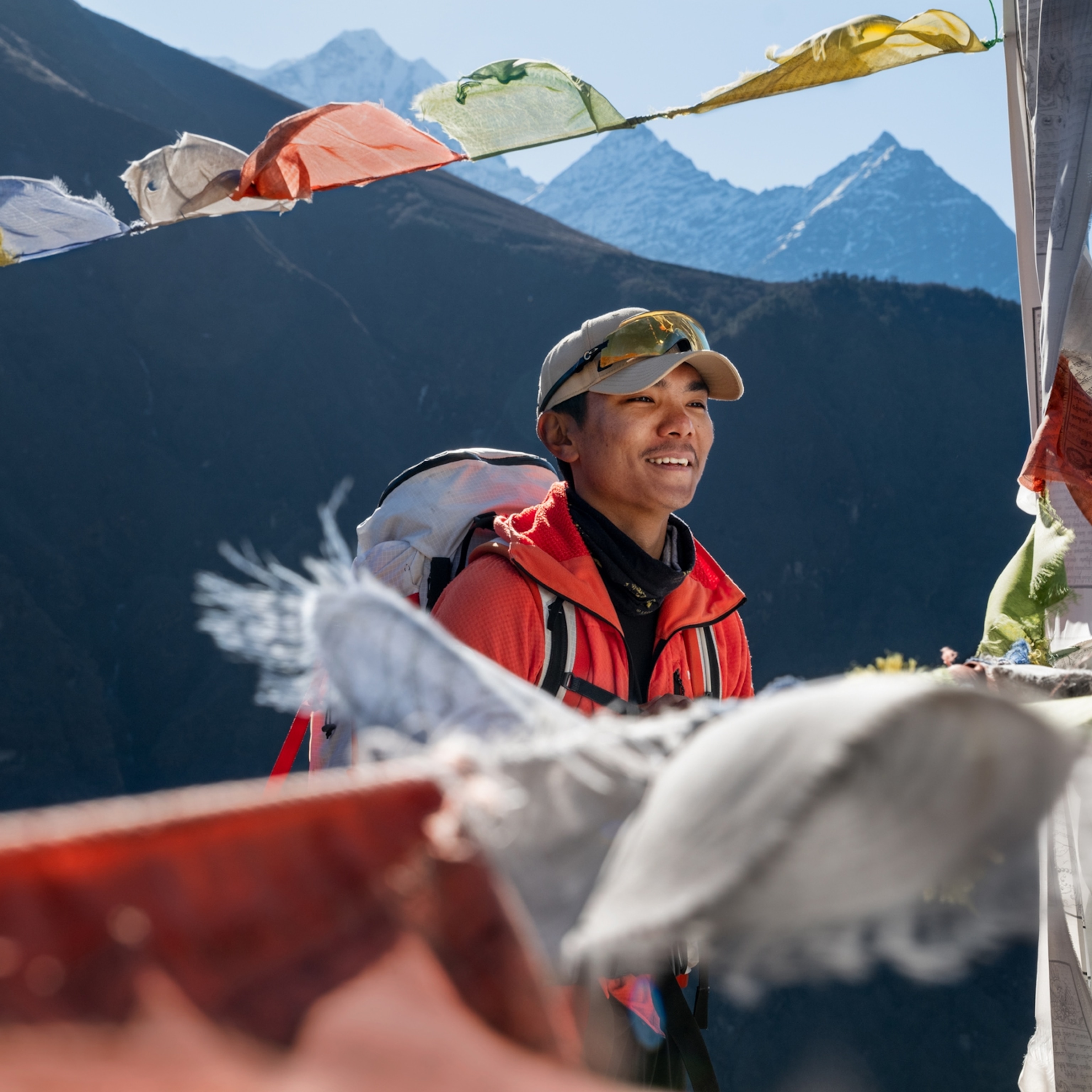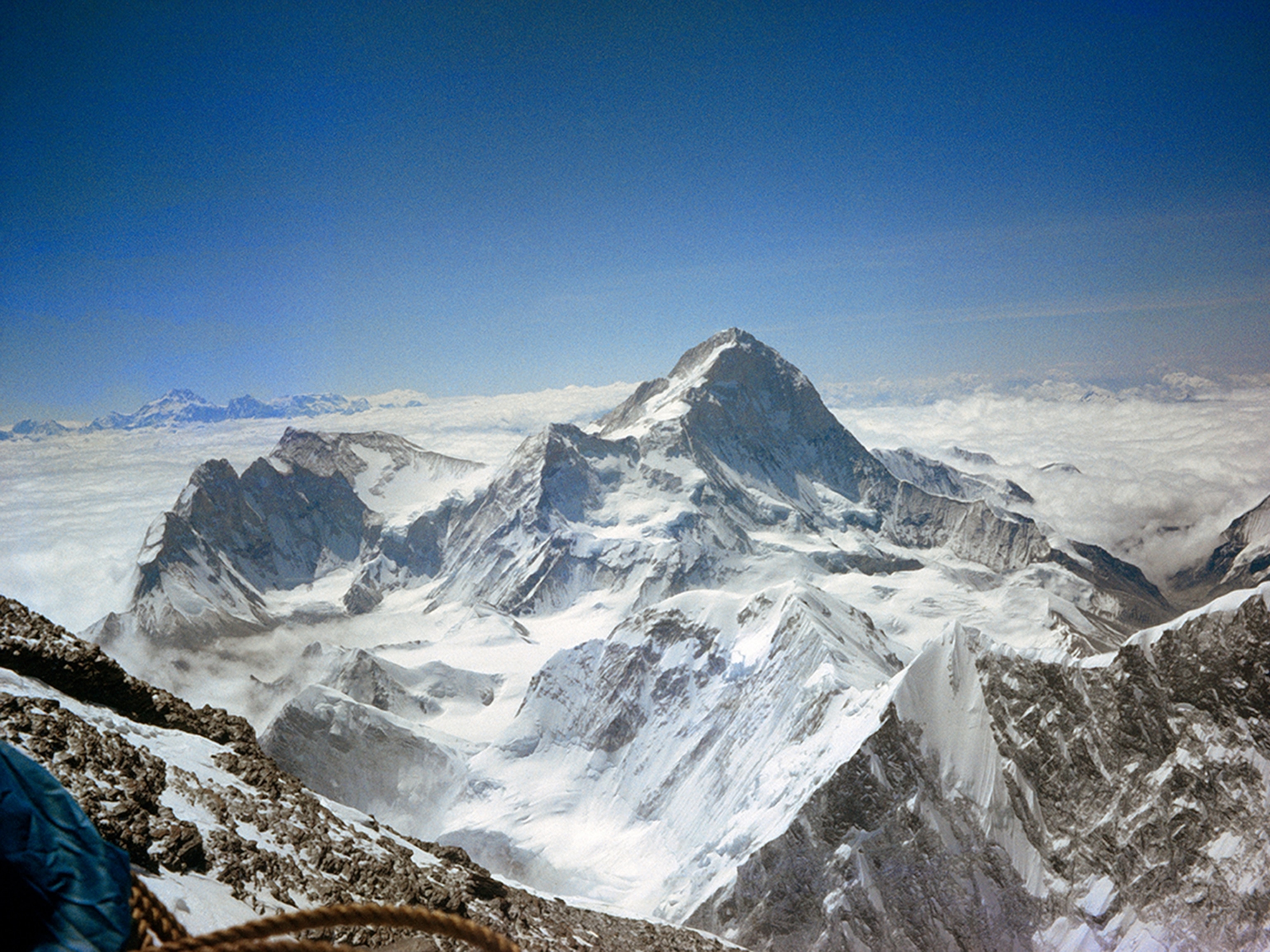Mountaineer Pasang Lhamu Sherpa Akita
One of Nepal’s rising stars in climbing immersed herself in earthquake relief efforts, showing her courage both on and off the mountain.
UPDATE: Congratulations to mountaineer Pasang Lhamu Sherpa Akita, our 2016 People's Choice Adventurer of the Year! See more >>
On April 25, 2015, a 7.8 magnitude earthquake shook Nepal, killing more than 8,800 people, injuring thousands more, leaving 2.5 million people homeless, and triggering massive avalanches on Everest. When the ground began to shake that day, Pasang Lhamu Sherpa Akita had just sat down to a cup of tea in Gorak Shep, a small town an hour’s walk from Everest Base Camp. She was with an American client, Christopher Wynne, who she had just guided up 20,075-foot Lobuche Peak, and a Sherpa friend, who had been on the mountain when Pasang Lhamu and two other women became the first Nepali women to climb K2—considered the most dangerous mountain in the world. They heard a deafening boom, saw an enormous powder cloud hurtling toward them from the direction of Everest, and rushed to slam their doors against it. The cloud settled and left the town covered in snow. Determined to do what she could to help the victims of the avalanche that had just hit Everest, Pasang Lhamu gathered a group of people and started to hike toward Everest Base Camp.
"Everybody was coming back. People kept saying, 'Where are you guys going? Don't go. It’s very dangerous,'” Pasang Lhamu remembers. “Most of the people [in my group] slowly turned back. Around 3 [p.m.], [there was] another earthquake, [and we heard another] very big boom. And then everybody got scared. Most of the people turned around [until there were only four of us left]. I just kept going."
The following day, she flew back to Kathmandu, the city where she lives with her husband, Tora Akita. Once she established that her husband and his parents were safe, she was ready to take action. In Kathmandu, she found crumbled buildings and streets crowded with families living under tarps. In the hours and weeks that followed the initial quake, the country endured more than 240 aftershocks, leaving people scared to go back inside the remains of their ruined homes.
"I realized that I could have been killed anywhere,” says Pasang Lhamu, who lost both her parents by the time she was 16. “I could have been killed at Everest Base Camp. But I was safe. I survived. There had to be some reason why I survived. I told my husband, ‘We have to do something for the people who are in trouble.'"
Five years ago, Pasang Lhamu became the first female mountaineering instructor in Nepal. During her career as a guide in the Himalaya and on Washington’s Mount Rainier, Pasang Lhamu developed an international network of friends. Within a week of the quake, she received a message from her friend Cira Crowell, a photographer from New Mexico, along with a wire of $500. Pasang Lhamu used the money to buy tarps, which she distributed to displaced people around Kathmandu. Then, she posted about what she had done on Facebook, tagging Crowell to credit her for the donation. Soon, support began to trickle in from Pasang Lhamu’s friends from all over. Within days of each contribution, Pasang Lhamu would post on Facebook, often with photographs of her delivering supplies to earthquake victims, and always with details about how much aid was distributed and where it went, and the names of the individuals and organizations that made the relief work possible.
Pasang Lhamu and her husband began by taking food and tarps to villages within an hour’s drive of Kathmandu, then shifted their focus to more remote mountain villages. Pasang Lhamu concentrated most of her efforts on the Gorkha district, and, in particular, in Laprak, a village located less than nine miles from the epicenter of the earthquake that was known even before the disaster as particularly vulnerable to landslides and seismic activity. The earthquake completely destroyed the village’s 600 homes and triggered landslides that washed out trails and cut off the village from help. Almost 2,400 of Laprak's villagers moved almost 2,000 feet uphill, afraid of aftershocks and more landslides. Only those too ill or elderly to make the uphill trek remained in the village’s ruins.
Pasang Lhamu initially worked to coordinate helicopter missions to get supplies to the makeshift town. She then joined forces with Damian and Willie Benegas, twin Argentinian mountaineers, who had previously helped with post-earthquake relief efforts in Kashmir in 2005. The Benegas brothers advocated that, rather than spend money on expensive helicopters, the team use the funds to employ local porters to carry supplies to the remote villages and repair trails as they went. Not only would the approach cut costs, it would provide income for porters who otherwise would not have work—income they could use to rebuild their own homes. In addition, the approach would ready the trails for trekking season, an important piece of Nepal’s economy.
On May 9, Pasang Lhamu helped mobilize 50 porters to carry food, tarps, blankets, and mattresses. The team set up the Hamro Ghar project, a temporary shelter for the elderly people trapped in Laprak, complete with 16 beds and a cook. Three days later, they returned with a doctor, a nurse, a journalist, and 85 porters carrying supplies. They established a health camp, discovering 36 pregnant women and 49 mothers with infants less than a year old. The following week, Pasang Lhamu returned with supplies, this time adding prenatal-care kits and more to her delivery.
In the few months before she returned to the United States to guide on Mount Rainier for the 2015 season, Pasang Lhamu used the same methods she employed in Laprak to coordinate and deliver aid to the hardest-hit villages in remote districts throughout Nepal. In November, Pasang Lhamu and the American client, Wynne, with her in Nepal on the day of the earthquake, will head to Ama Dablam to raise funds for women’s education in Nepal, the world’s second poorest country.
“Pasang is an amazing young woman, and the epitome of the next generation of Nepali mountaineers,” says Ben Ayers, the Nepal country director for dZi, a nonprofit that assists people in the most remote and resource-limited regions of Nepal. “While she is undoubtedly the strongest and most experienced female climber in Nepal, her tenacity and fearlessness on the world’s highest summits is shadowed by her dedication to giving back to her country—especially in her incredible relief work immediately after the April earthquake.”
—Jen Altschul
THE INTERVIEW
Adventure: Why did you want to become a mountaineering instructor?
Pasang Lhamu Sherpa Akita: We have so many beautiful mountains [in Nepal]. So many people work there. I had seen a lot of women climb Everest, but I had never seen any women guiding. I decided I wanted to make that my profession to encourage other women.
A: What was it like to become the first female mountaineering instructor in Nepal?
PLSA: It was very hard for me to choose this profession as a woman—especially in our culture. Daughters are supposed to stay home, get married, and take care of the family. Mountaineering is male-dominated. You have to be mentally and physically strong. It was really, really hard for me. Sometimes I wondered if I was doing the right thing. All my colleagues used to tell me that I should do whatever I could then, because after I got married, my career would be finished. It's been five years. I got married. I have a family. I have [still] been guiding everywhere. So, now, I’m proud.
- National Geographic Expeditions
A: Did you post on Facebook every time you distributed aid?
PLSA: Everything is on Facebook—where we went, what we did, how much we donated. We posted on Facebook so people could see. Because some people just sent $20 to $40—[we wanted them to see that] that money [went to Nepal].”
A: What is the situation like in Nepal, now?
PLSA: So many places still need to be rebuilt. So many places people never even reached—people have not even seen them [since the earthquake]. Those people feel helpless now. Lots of people moved to Kathmandu, and they still live in refugee and displaced-people camps. They just want to go back to their homelands, back to their villages. They want to go back to their own lives.
A: What can people do to help?
PLSA: In Nepal, tourism is very important for us. Most people depend on tourism. Lots of [foreigners] think that Nepal is gone, bad, and dangerous, but we still have so many places that the earthquake didn't affect that are still in really good shape. My big message is, come to Nepal, visit Nepal, directly support [our economy]. Tell us that our country is still beautiful. Instead of, "Give me a donation," I like to tell people, "Please, visit Nepal."







